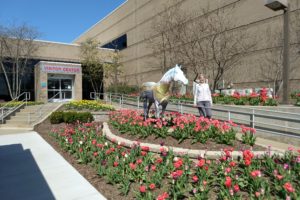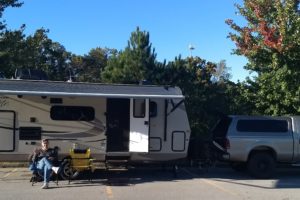In our travel brochure for the Fredericton area, we saw a driving tour that highlighted Boss Gibson’s Marysville, one of Canada’s best preserved examples of a 19th century mill town. So of course we had to go visit. We easily found the mill that now houses Government of New Brunswick offices. Nowhere could we find a building with information on the town, so we started out on our own self-driving tour!

A brick cotton mill dominates the town and its streets are lined with rows of brick workers’ tenements, elegant managers’ homes, stores, and churches. Here we can envision what the 19th century industrial and social structures must have looked like. What began as a modest sawmill village on the Nashwaak River became a booming, prosperous town through the genius and foresight of Alexander “Boss” Gibson who bought up land and created this town.


By 1900, Marysville was among the largest mills in Canada. The mill was state-of-the-art for its time, incorporating not only electric lighting, but also all those features characteristic of plants whose power was provided from a central plant and distributed by belts, pulleys,and overhead shafting to machinery whose location within the complex was dictated by its place within the production framework.
The cotton mill operated profitably well into the 1940s, and employed most of the town’s population. But by the end of the war, foreign competition forced the mill to close in the 1970s.

workers homes
Workers’ homes were built out of brick and for the most part 2-story duplexes. I haven’t found the total count of the buildings, but here’s what they looked like.





sports
Baseball was enjoyed by the workers. From its first recorded win in 1895 to present day players signing professional contracts, Marysville has had a love affair with baseball. In 1911 a rail fence was built to keep the players in and the cows out. In 1920, Canadian Cottons brought in an athletic director who upgraded the field and built a running track around the field.


business buildings around town






managers’ homes
Beautiful homes for the managers were built across the river and down a block—probably to save them from the smell and noise of the mill. Many of the homes are still being used and are well kept.







who was Boss Gibson?
Here are some signs that tell us about Mr. Gibson and his goals for the city he built. He had already made his fortune before starting this cotton mill community and offering jobs to hundreds of people. He also ran a grist and flour mill, as well as sawmills. The town was named for his wife, Mary.



Now let’s move on to the legislative building back in Fredericton.




